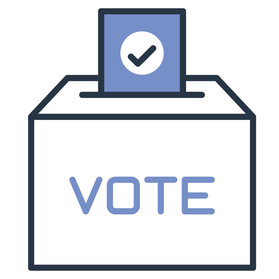|
By Meghna Phalke AmeriCorps S&N As voting is one of the most fundamental rights of our democracy, its absence removes an American citizen’s agency and voice in a way that very little else can. Although every state is obligated, under the law, to make accommodations for people experiencing homelessness, these people remain hindered by bureaucratic red tape. There is very little data collected regarding this issue, but in 2008, only one in three people experiencing homelessness registered to vote, and in 2012, only about 10% actually voted (Vertenten 2020). The barriers that prevent those experiencing homelessness from voting span from residence requirements to lack of transportation. Registering to vote often requires a fixed or permanent address, sometimes along with proof of residence, which automatically serves as a deterrent for citizens experiencing homelessness. They are legally allowed to vote, and different states accommodate for transient populations in different ways: Iowa considers the place of sleep to be the place of residence, Maine considers “nontraditional residences, such as shelters, parks, and underpasses,” and Nebraska considers the county to be the place of residence for those experiencing homelessness (“Voter Registration” 2016). However, understanding and applying these legal technicalities is a luxury not often afforded to people experiencing homelessness, and they too often see themselves barred from the voting process by the “Mailing Address” line on the registration form.
On Election Day itself, transportation to polling places poses an additional obstacle to people experiencing homelessness, as it is rare for the means of transportation on which they rely to make polling places accessible. And at the polling places, identification requirements necessitate that people provide certain documents that people experiencing homelessness often do not have. Provided they are able to provide these documents, once inside, citizens experiencing homelessness face one final obstacle: their circumstances make it such that information about candidates and ballot measures is inaccessible and very difficult to acquire. From registering to vote, to heading out to vote, to arriving at the polling place, to casting a ballot, people experiencing homelessness face hurdles at every step of the voting process—altogether, nearly insurmountable challenges when it comes to an act that is one of the most basic rights for U.S. citizens. A more insidious aspect of this issue is that it takes the form of voter suppression; homelessness disproportionately impacts populations that have been historically oppressed and silenced in voting—namely Black and Latinx citizens. Since voting used to be a right solely afforded to white male landowners, the issue of enforcing voting rights for those experiencing homelessness epitomizes the evident remnants of the original discriminatory nature of the voting right. Across the country, as fights against voter suppression gain momentum (Thank you, Stacey Abrams!), initiatives to increase access to voting for people experiencing homelessness are also gaining traction. In Washington D.C., the National Homelessness Law Center, the National Coalition for the Homeless, and Trust Law (the Thomson Reuter Foundation’s legal pro bono network) partnered in 2020 to create a comprehensive guide for voters experiencing homelessness to understand their legal voting rights and have their questions answered (Biron 2020). The National Alliance to End Homelessness has pioneered Every One Votes, “an initiative to ensure that people who are experiencing homelessness are registered to vote and able to exercise their right to vote,” which brings together tools and resources for providers to guide people experiencing homelessness in voter registration and voting (“Every One Votes”). An article in the Daily Northwestern delves into the efforts of Kemone Hendricks of the Democratic Party of Evanston and Connections for the Homeless to create voter registration pop-up booths across the country, accessible to people experiencing homeless (Nelson). The year 2020 crystallized the need for underserved populations in America to have their voices heard, and people experiencing homelessness have been overlooked for far too long. Rather than allowing this issue to continue to fly under the radar, it is important that we raise awareness and build on the momentum of efforts to fulfill enfranchisement for U.S. citizens experiencing homelessness. Works Cited Biron, Carey L. "No Address? Voting While Homeless Is Challenging in U.S. Election." Reuters, 29 Oct. 2020, www.reuters.com/article/us-usa-property-homeless-voting/no-address-voting-while-homeless-is-challenging-in-u-s-election-idUSKBN27E23Z. "Every One Votes." National Alliance to End Homelessness, endhomelessness.org/every-one-votes-you-have-a-stake-in-elections/. Nelson, Delaney. "Community Leaders Help People Experiencing Homelessness to Vote." The Daily Northwestern, 21 Oct. 2020, dailynorthwestern.com/2020/10/21/city/community-leaders-help-people-experiencing-homelessness-vote/. Vertenten, Dora Kingsley. "As Few as 1 in 10 Homeless People Vote in Elections – Here's Why." The Conversation, 15 Oct. 2020, theconversation.com/as-few-as-1-in-10-homeless-people-vote-in-elections-heres-why-146716. "Voter Registration Is All About Residency (and Domicile)." NCSL The Canvass, no. 69, May 2016, www.ncsl.org/Documents/Elections/The_Canvass_May_2016.pdf.
0 Comments
Leave a Reply. |
BLogArchives
July 2024
Categories |
©2022 Chicago HOPES for Kids. All Rights Reserved.
Website by Gumbo Media
Website by Gumbo Media


 RSS Feed
RSS Feed
